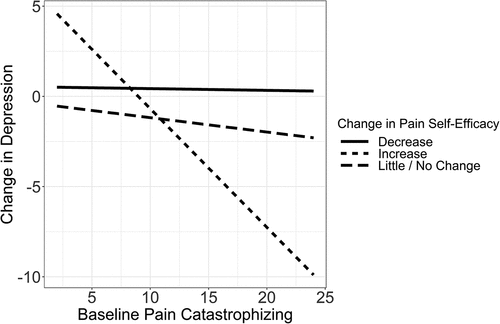Figures & data
Table 1. Mean and SD for the study variables (N = 195) at baseline and 1-year follow-up.
Table 2. Pearson correlation coefficients for the study variables (N = 195).
Figure 2. The moderation effect of the change in pain self-efficacy between baseline pain catastrophizing and change in depression. When pain self-efficacy decreased or was unchanged, there was no relationship between baseline pain catastrophizing and change in depression. However, there was a significant relationship between pain catastrophizing and the change in depression when pain self-efficacy increased. Patients with lower baseline pain catastrophizing had more severe (or worsening) depression after a year. Conversely, those with high baseline pain catastrophizing had decreased (or improved) depression after a year.


